Do you have a question about the Samsung C27F591FD and is the answer not in the manual?
Ensure adequate space around the product for ventilation to prevent overheating.
Important safety warnings and guidelines to prevent hazards and ensure safe operation of the product.
Guidelines for storing the product to prevent damage or stains, especially with humidifiers.
Explanation of warning and caution symbols used throughout the manual.
Instructions for safely cleaning the monitor panel and exterior to prevent scratches and damage.
Critical safety guidelines regarding power cords, plugs, and electrical connections.
Warnings and cautions for safe product installation, including placement and environmental factors.
Warnings and precautions for safe operation, including handling, moving, and potential hazards.
Important cautions regarding screen usage, power saving, accessories, and user comfort.
Overview of the monitor's physical parts, including the control panel.
Details on JOG Button, Power LED, and Function Key Guide for interface navigation.
Explains shortcut button functions for quick access to settings like Brightness and Volume.
Describes how to use the Function Key Guide to access various monitor settings and functions.
Details how the JOG button functions in different modes (Power Saving, Main Menu).
Instructions on adjusting monitor picture settings like brightness, contrast, and sharpness.
Guide on how to adjust the monitor's volume and use the mute function.
Identification and description of all input/output ports on the rear of the monitor.
Instructions on how to safely adjust the tilt angle of the monitor for optimal viewing.
Information on how to use an anti-theft lock to secure the product in public places.
Guidelines for safely moving the monitor without damaging the screen or the unit.
Step-by-step instructions for assembling and attaching the monitor stand.
Step-by-step instructions for safely detaching and removing the monitor stand.
Important checks before connecting external devices to ensure proper installation and prevent damage.
Guide on connecting the monitor to a PC, including different cable types.
Instructions for connecting the monitor to a PC or device using an HDMI cable.
Instructions for connecting the monitor to a PC using a DisplayPort (DP) cable.
Instructions for connecting the monitor using an HDMI-DVI cable.
How to connect headphones for audio output from the monitor.
Steps to connect the power adapter and power on the monitor.
Guidelines for maintaining correct posture while using the monitor for comfort and health.
Instructions on installing drivers to set the optimum resolution and frequency for the product.
Information on setting the optimal display resolution for the monitor.
Adjusts picture quality for optimal viewing based on environment and preferences.
Adjusts picture brightness and contrast for clarity and illumination.
Adjusts object outlines clarity and screen color tone for optimal reproduction.
Enhances picture details and vividness, especially for low-resolution images.
Adjusts black level for improved image quality when using HDMI connections.
Reduces blue light to provide comfortable viewing and protect eyes.
Optimizes screen settings for an enhanced gaming experience.
Accelerates panel response rate for smoother motion in videos and games.
Adjusts the display size to match the aspect ratio of the input source.
Fine-tunes screen position, including horizontal adjustment and analog mode settings.
Sets the transparency level for the monitor's on-screen display menus.
Adjusts the on-screen display menu's position on the screen.
Sets the display language for the on-screen menus.
Sets how long the on-screen display menu remains visible before disappearing.
Adjusts volume, sound modes (Standard, Music, Movie, Clear Voice), and sound output channels.
Eliminates screen tearing and lag for smoother gameplay by synchronizing frame rates.
Reduces power consumption by controlling the monitor panel's electric current.
Sets a timer for the product to automatically power off after a specified period.
Selects input mode for PC or AV devices to adjust picture size.
Automatically or manually detects the input signal source.
Adjusts the delay before a key press is repeated, affecting input responsiveness.
Configures the power LED status (working or standby).
Resets all product settings to their default factory values.
Displays current input source, frequency, and resolution.
Enables monitor partitioning into multiple sections for efficient use.
Lists the OS and hardware requirements for installing Easy Setting Box.
Potential issues affecting Easy Setting Box installation due to system components.
Steps to test the product before contacting customer support for issues.
How to perform self-diagnosis tests to identify product issues.
How to check and ensure the display resolution and frequency are supported.
Troubleshooting common installation problems like screen switching or blank spaces.
Troubleshooting issues like a blank screen or a non-responsive power LED.
Resolves "Not Optimum Mode" messages by adjusting resolution and frequency.
Troubleshoots image distortion, blurriness, or instability by checking connections and settings.
Addresses inconsistent colors, shadows, and brightness/darkness issues.
Improves text clarity and resolves choppy video playback issues.
Troubleshoots no sound, low volume, or source device boot-up sound problems.
Addresses common user queries and provides answers for settings adjustments.
Provides general specifications of the monitor, including model name, size, and dimensions.
Lists standard signal modes, resolutions, frequencies, and sync polarities for compatibility.
Provides detailed specifications for VESA resolutions, including frequencies and pixel clocks.
Outlines conditions under which service fees may be charged, even if under warranty.
Lists conditions that are not considered product defects and may incur service charges.
Details product damages caused by mishandling, incorrect usage, or unauthorized repairs.
Covers damages from natural disasters, consumable use, or issues without product defects.
Ensure adequate space around the product for ventilation to prevent overheating.
Important safety warnings and guidelines to prevent hazards and ensure safe operation of the product.
Guidelines for storing the product to prevent damage or stains, especially with humidifiers.
Explanation of warning and caution symbols used throughout the manual.
Instructions for safely cleaning the monitor panel and exterior to prevent scratches and damage.
Critical safety guidelines regarding power cords, plugs, and electrical connections.
Warnings and cautions for safe product installation, including placement and environmental factors.
Warnings and precautions for safe operation, including handling, moving, and potential hazards.
Important cautions regarding screen usage, power saving, accessories, and user comfort.
Overview of the monitor's physical parts, including the control panel.
Details on JOG Button, Power LED, and Function Key Guide for interface navigation.
Explains shortcut button functions for quick access to settings like Brightness and Volume.
Describes how to use the Function Key Guide to access various monitor settings and functions.
Details how the JOG button functions in different modes (Power Saving, Main Menu).
Instructions on adjusting monitor picture settings like brightness, contrast, and sharpness.
Guide on how to adjust the monitor's volume and use the mute function.
Identification and description of all input/output ports on the rear of the monitor.
Instructions on how to safely adjust the tilt angle of the monitor for optimal viewing.
Information on how to use an anti-theft lock to secure the product in public places.
Guidelines for safely moving the monitor without damaging the screen or the unit.
Step-by-step instructions for assembling and attaching the monitor stand.
Step-by-step instructions for safely detaching and removing the monitor stand.
Important checks before connecting external devices to ensure proper installation and prevent damage.
Guide on connecting the monitor to a PC, including different cable types.
Instructions for connecting the monitor to a PC or device using an HDMI cable.
Instructions for connecting the monitor to a PC using a DisplayPort (DP) cable.
Instructions for connecting the monitor using an HDMI-DVI cable.
How to connect headphones for audio output from the monitor.
Steps to connect the power adapter and power on the monitor.
Guidelines for maintaining correct posture while using the monitor for comfort and health.
Instructions on installing drivers to set the optimum resolution and frequency for the product.
Information on setting the optimal display resolution for the monitor.
Adjusts picture quality for optimal viewing based on environment and preferences.
Adjusts picture brightness and contrast for clarity and illumination.
Adjusts object outlines clarity and screen color tone for optimal reproduction.
Enhances picture details and vividness, especially for low-resolution images.
Adjusts black level for improved image quality when using HDMI connections.
Reduces blue light to provide comfortable viewing and protect eyes.
Optimizes screen settings for an enhanced gaming experience.
Accelerates panel response rate for smoother motion in videos and games.
Adjusts the display size to match the aspect ratio of the input source.
Fine-tunes screen position, including horizontal adjustment and analog mode settings.
Sets the transparency level for the monitor's on-screen display menus.
Adjusts the on-screen display menu's position on the screen.
Sets the display language for the on-screen menus.
Sets how long the on-screen display menu remains visible before disappearing.
Adjusts volume, sound modes (Standard, Music, Movie, Clear Voice), and sound output channels.
Eliminates screen tearing and lag for smoother gameplay by synchronizing frame rates.
Reduces power consumption by controlling the monitor panel's electric current.
Sets a timer for the product to automatically power off after a specified period.
Selects input mode for PC or AV devices to adjust picture size.
Automatically or manually detects the input signal source.
Adjusts the delay before a key press is repeated, affecting input responsiveness.
Configures the power LED status (working or standby).
Resets all product settings to their default factory values.
Displays current input source, frequency, and resolution.
Enables monitor partitioning into multiple sections for efficient use.
Lists the OS and hardware requirements for installing Easy Setting Box.
Potential issues affecting Easy Setting Box installation due to system components.
Steps to test the product before contacting customer support for issues.
How to perform self-diagnosis tests to identify product issues.
How to check and ensure the display resolution and frequency are supported.
Troubleshooting common installation problems like screen switching or blank spaces.
Troubleshooting issues like a blank screen or a non-responsive power LED.
Resolves "Not Optimum Mode" messages by adjusting resolution and frequency.
Troubleshoots image distortion, blurriness, or instability by checking connections and settings.
Addresses inconsistent colors, shadows, and brightness/darkness issues.
Improves text clarity and resolves choppy video playback issues.
Troubleshoots no sound, low volume, or source device boot-up sound problems.
Addresses common user queries and provides answers for settings adjustments.
Provides general specifications of the monitor, including model name, size, and dimensions.
Lists standard signal modes, resolutions, frequencies, and sync polarities for compatibility.
Provides detailed specifications for VESA resolutions, including frequencies and pixel clocks.
Outlines conditions under which service fees may be charged, even if under warranty.
Lists conditions that are not considered product defects and may incur service charges.
Details product damages caused by mishandling, incorrect usage, or unauthorized repairs.
Covers damages from natural disasters, consumable use, or issues without product defects.
| Style | Curved |
|---|---|
| Color | Silver |
| Screen Type | - |
| Stand Type | Simple |
| Wall Mount | - |
| Tilt | -2.0º (±2.0º) ~ 20.0º (±2.0º) |
| Sound | SRS TheaterSound |
| Features | Eye Saver Mode |
| OS Compatibility | Mac |
| Interface Connectors | D-Sub |
| Operation Conditions | Humidity: 10 to 80% |
| Tiltable | yes |
| Touch Screen | no |
| Webcam | no |
| Screen Size | 27 |
| Panel Type | VA |
| Aspect Ratio | 16:9 |
| Resolution | 1920 x 1080 |
| Refresh Rate | 60Hz |
| Viewing Angle | 178°/178° |
| Response Time | 4 (GtG) ms |
| Brightness | 250 cd/m2 (Typ) |
| Contrast Ratio | Dynamic: Mega-DCR |
| Pixel Pitch | - |
| Native Resolution | 1920 x 1080 |
| Horizontal Viewing Angle | 178 degrees |
| Vertical Viewing Angle | 178 degrees |
| Synchronization | freesync (amd adaptive sync) |
| HDR | yes |
| Type | External Adapter |
| Power Supply | 50/60 Hz |
| Power Consumption | Standby: < 0.5 W |
| Depth with Stand | 270.4 mm |
| Height with Stand | 457.3 mm |
| Width with Stand | 614.2 mm |
| Net Weight with Stand | 4.4 kg |
| Depth without Stand | 142.9 mm |
| Height without Stand | 362.9 mm |
| Width without Stand | 614.2 mm |
| Net Weight without Stand | 3.5 kg |
| Built-In Speakers | yes |
| HDMI Ports | 1 |
| Mini Display Port | 0 |
| VGA Ports | 1 |
| DVI | 5 |
| Thunderbolt Ports | 0 |
| Headphones Output | yes |
| Voice Assistant | no |
| Power Saving Mode | 0.3 watts |
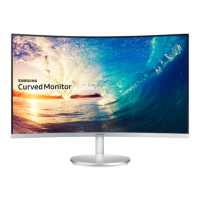
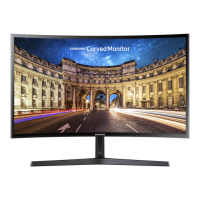


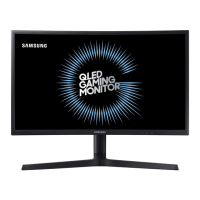
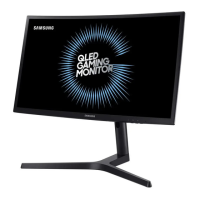
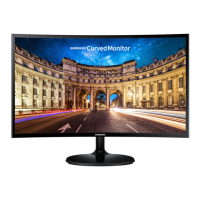




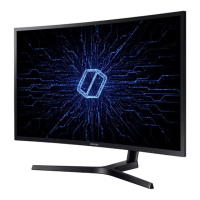
